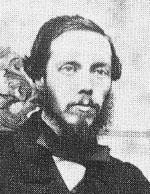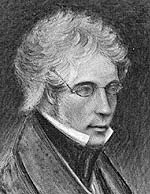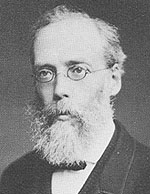The Bartholomew map-making dynasty:1784-2008
The name Bartholomew began its association with maps in the 18th century when George Bartholomew (1784-1871) started his apprenticeship (aged thirteen) as a map engraver with the Edinburgh firm of W&D Lizars. George’s son, John (1805-1861), followed in his father’s footsteps as a map engraver and it was he who, in 1826, drew and engraved the first Directory plan of Edinburgh which was published by W.H. Lizars. Thence he set up his own engraving business into which he brought his son, (another John 1831-1893), as initially a trainee and then later as a partner. Hence the new business title of John Bartholomew & Son was created and used from 1860.
As all good businesses should, the knowledge and skills born and nurtured through George’s (remarkably long life for the times) continued to the next generation. John George Bartholomew (1860—1920) joined his father (John as mentioned above) in the trade that had, by then, become a well-established family tradition. 1888 saw him take control of the business and in the following year, the firm relocated and became known as The Edinburgh Geographical Institute. From 1888 John George was in partnership with Thomas Nelson until the latter died in 1892. The cartographic tradition continued into a sixth family generation, finally with John Christopher Bartholomew (1923–2008).
Away from the family history, Bartholomew maps have served as a benchmark for cartographic detail, accuracy and variety, covering all areas of the globe, taking in all nature of geographical, topographical, geological, hydrographical, political and statistical detail. Their aesthetic qualities are cleverly balanced, drawing attention to the relevant detail graphically when required, but rarely over-decorating for no good reason.
George Bartholomew, as the progenitor of this prolific family company, could not have predicted it’s longevity, but with attention to detail and accuracy as their watchwords, it is surely not surprising that his name still appears on so many quality maps.
As all good businesses should, the knowledge and skills born and nurtured through George’s (remarkably long life for the times) continued to the next generation. John George Bartholomew (1860—1920) joined his father (John as mentioned above) in the trade that had, by then, become a well-established family tradition. 1888 saw him take control of the business and in the following year, the firm relocated and became known as The Edinburgh Geographical Institute. From 1888 John George was in partnership with Thomas Nelson until the latter died in 1892. The cartographic tradition continued into a sixth family generation, finally with John Christopher Bartholomew (1923–2008).
Away from the family history, Bartholomew maps have served as a benchmark for cartographic detail, accuracy and variety, covering all areas of the globe, taking in all nature of geographical, topographical, geological, hydrographical, political and statistical detail. Their aesthetic qualities are cleverly balanced, drawing attention to the relevant detail graphically when required, but rarely over-decorating for no good reason.
George Bartholomew, as the progenitor of this prolific family company, could not have predicted it’s longevity, but with attention to detail and accuracy as their watchwords, it is surely not surprising that his name still appears on so many quality maps.


